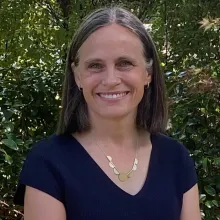High-temperature gases in the crust and near the surface of planetary bodies
High-temperature gases are found in many environments on Earth and other planets, but they have been overlooked because they leave little trace. These projects aim to investigate these gases in magmas, volcanoes and metamorphic rocks using geochemistry and mineralogy of natural samples and experiments.
Project status
Content navigation
About

A fundamental question in Earth and planetary systems is: how are chemical elements distributed from high temperature in the planet's interior to low temperatures at the surface, atmosphere and/or ocean? This question is at the heart of understanding how life originated, how planetary atmospheres develop, how ore deposits form and how climate is regulated. Currently, there is no consensus on the sources and sinks of elements on Earth now, nor over Earth's history, in part because some elements are volatile: preferring to be in the gas phase and they leave little trace.
Gas mixtures play a crucial role in distributing elements between different parts of Earth and planet-forming systems over a range of settings and temperatures. Despite the fundamental role of gases in geochemical cycles, few experiments exist on gas-solid or gas-melt reactions and the molecular-scale reaction mechanisms are poorly constrained by experiment, theory or field observations. Our recent work shows that these reactions may be extraordinarily rapid.
Students are sought for research projects in this exciting new field of study. Students who might be interested in the projects may have undergraduate degrees in Earth Sciences, Chemistry, Environmental Science, Materials Science, or Engineering. A variety of projects are available with appropriate scope for Honours, Masters or PhD degrees. At RSES, students will have access to state-of-the-art analytical and experimental facilities (rses.anu.edu.au/research/facilities) and a vibrant student population (oncirculation.com).
Possible Future Research Avenues:
Projects that investigate gas-solid reactions using experiments combined with state-of-the-art analysis of laboratory, field samples, and/or modelling are available; for example:
- How fast does SO2 react with carbonate aerosols commonly found in desert and construction dust? How do the reaction products reflect or absorb the Sun’s radiation and thus affect climate warming?
- What minerals form when subvolcanic gases react with minerals in the Earth’s crust? What are the implications of these reactions in forming early planetary crusts?
- How do isotopes fractionate in reactions between gases and solids?
- What is the efficiency of harvesting thermal heat and gases from reactions between flue gas and rock?
Interested applicants should send an e-mail, preferably with a CV or resume and academic transcript, to Dr. Penny King (penny.king@anu.edu.au).

